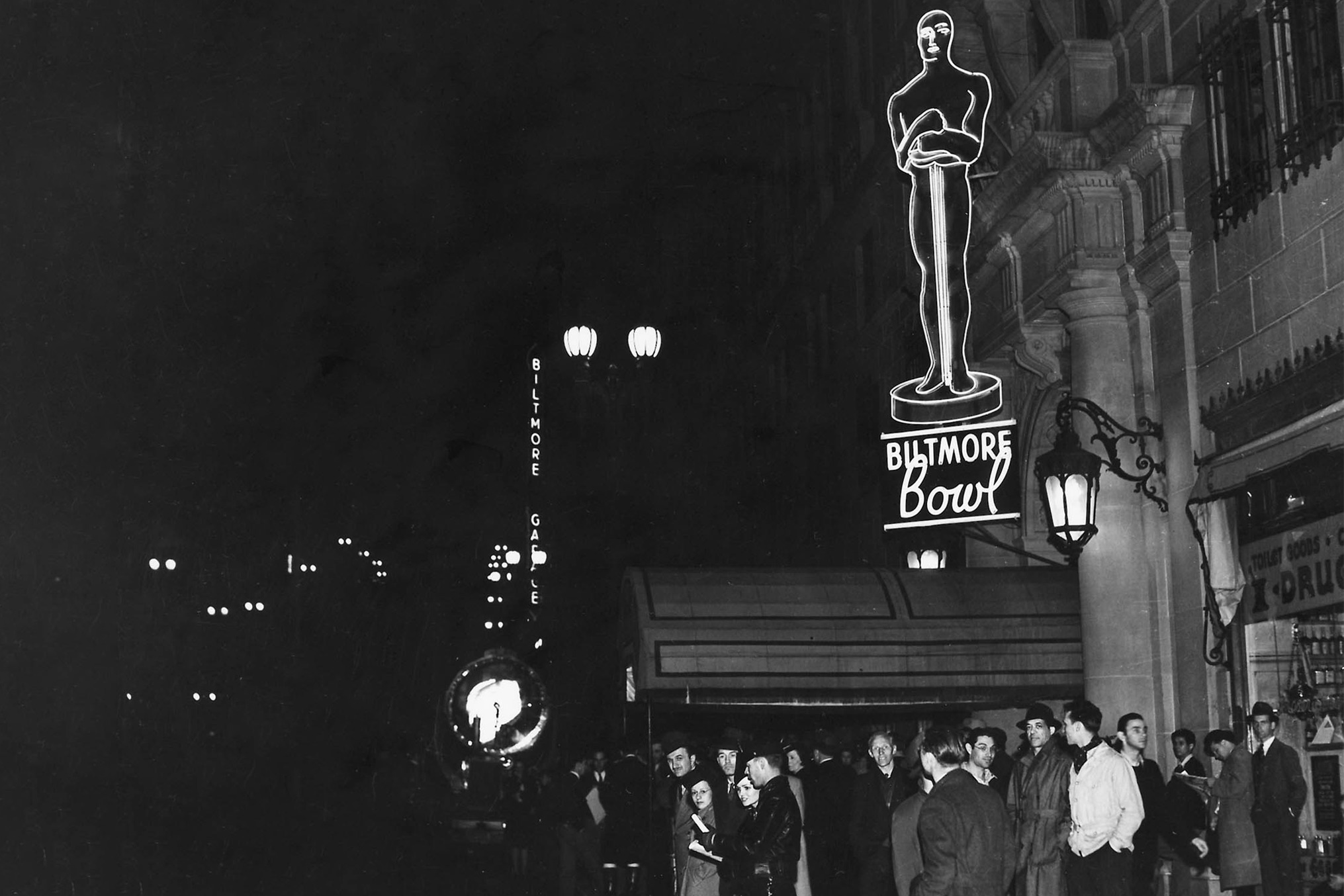The Millennium Biltmore Hotel—originally the Los Angeles Biltmore—has been a downtown LA landmark for nearly a century. When it opened in 1923, it was the largest hotel west of Chicago and helped establish downtown Los Angeles as an entertainment hub in the 1920s and ‘30s. The Biltmore’s ornate exterior—with gold details, fountains, and marble columns—concealed a semi-secret speakeasy for much of Prohibition. In addition to being the site of several notable film shoots, the hotel’s massive ballroom, the Biltmore Bowl, made it an ideal Academy Awards venue. The Biltmore hosted the ceremony eight times from 1932 to 1942, during which the Awards grew from an intimate dinner to the elaborate, public event we know today.


Images: (left) The exterior of the Biltmore Bowl, the site of eight Academy Awards ceremonies from 1932 to 1942, pictured here in 1940. Courtesy of Margaret Herrick Library, Academy of Motion Picture Arts and Sciences; (right) The Millennium Biltmore Hotel. Photo by Joshua White, JWPictures/©Academy Museum Foundation
The Los Angeles Biltmore Hotel’s opening party in October 1923 was defined by lavishness. Over 3,000 of LA’s rich and famous attended the event, including Hollywood studio head Jack Warner, Cecil B. DeMille, Mary Pickford, and Myrna Loy. Guests were treated to a seven-course dinner as well as seven orchestras, playing throughout the venue and accompanied by singing canaries. The hotel and nearby theater district on Broadway quickly made the neighborhood a partygoer’s mecca. During Prohibition, the Biltmore’s Gold Room became a speakeasy with a hidden door that allowed everyday revelers to avoid the police and famous patrons like Gloria Swanson to avoid the paparazzi.
The Biltmore’s glamorous reputation and Hollywood ties made it an obvious choice for the Academy Awards. Its 2,000-seat ballroom, the Biltmore Bowl, hosted the event eight times between 1932 and 1942. Because the Biltmore was larger than previous venues, the ceremony evolved from an intimate dinner to a more public party that industry professionals could attend for $10 a plate in addition to hundreds of reporters and columnists. The expanded scope prompted a new approach to marketing as well. The moniker “Oscar” was born during the Biltmore years, with a huge neon statuette gracing the hotel’s exterior. Fans began to gather outside the hotel for the film industry’s biggest night, each hoping to catch a glimpse of the era’s most beloved stars.





The Academy Awards underwent another significant change in its last year at the Biltmore. In 1942, as the 14th ceremony was being planned, Pearl Harbor was attacked. Bette Davis was Academy president at the time and suggested the Awards move to an auditorium where the public could purchase tickets and profits could be donated to the Red Cross. Her idea was rejected, and Davis famously resigned soon after.
The ceremony went on at the Biltmore that year and was a decidedly somber affair, with muted colors suggested for civilians’ attire and military dress uniforms encouraged for those who had enlisted. Dancing was taken off the program, and former presidential candidate Wendell L. Willkie spoke on behalf of President Roosevelt about America’s duty to confront the Axis powers. As World War II intensified over the years, the Awards were moved to Grauman’s Chinese Theater, a venue less associated with celebration and revelry.
Still, the Biltmore’s connection to the film industry remained strong, and the hotel appeared in many iconic films, including Ocean’s 11 (USA, 1960), The Sting (USA, 1973), and Chinatown (USA, 1974). Now called the Millennium Biltmore Hotel, the building received a major renovation in 2015 and remains an integral part of downtown Los Angeles.